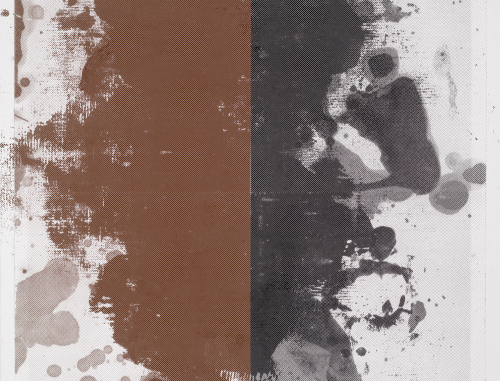

Since the appointment of New York businessman/gallerist/polka dot personality Jeffrey Deitch as director in June 2010, MOCA has left the Los Angeles art world puzzled, applauding and horrified. Deitch’s latest project for Los Angeles’ Museum of Contemporary Art, The Painting Factory: Abstraction After Warhol is a slightly confused, apparently hastily hung show that occupies an unusual, although somehow fittingly quintessentially Los-Angeles space between high modernist painting (or our historical image of it) and the tragically absurd fame-oriented world we so closely associate with “Andy.”
The show’s premise itself is somewhat of a head-scratcher, as “abstraction” is not usually the term associated with Warhol. The curatorial thesis asks the viewer to examine just such a relationship, namely contemporary artists working under the very general umbrella of abstraction are paying homage to and dialoguing with not only the infamous New York school, but with Warhol’s pop influence.
Warhol opens the space with two nearly identical pairs of glittering noir paintings, Diamond Dust Shadow (1979); throughout the reproducible image for which he is famous is repeated, mechanized, and presented with a tone of sobriety. The artist’s large- scale silkscreened Rorschach and Camouflage paintings that occupy the large walls of the gallery are not so much abstractions, but simply Warhol gone to Cinemascope scale. The placement of Glenn Ligon and Chris Wool’s work, also presented through multiple, yet similar examples (as through Deitch had trouble making decisions for his checklist) is almost painfully obvious, stretching a dialogue between works to near mimicry or imitation. The comparison does no favor for any of the artists as Warhol, the clear progenitor in the curator’s eyes is not represented with his best work and the ‘next generation’s’ contributions fail to transcend the presented comparison.
Where artists post-Warhol seem to have moved past ideas such as representation and abstraction, this exhibition narrows the categories once more. By selecting almost entirely oversized paintings (DAS INSTITUT’s seemingly out-of place installation in placed in an awkward transition space between two galleries is the only exception to the rule) the show further limits the definitions and readings of abstraction. Kelly Walker and Mark Bradford’s work exists largely on their own merits, the former especially bears little benefit from the context in which it is place, but is a pleasure to unpack and examine nonetheless.
The Painting Factory’s biggest “mistake” of sorts is its desire to draw such a linear influence from pop to the contemporary moment. Artists working within any of the various and complementary post-New York Abstract Expressionist paradigms, which we may broadly address as Minimalism and Conceptualism attempted at some level to remove art from its commodity status. The Painting Factory relies on and recreates the vocabulary of New York Abstract Expressionism at its height, the white walls, even the gallery floor has been covered with white carpeting for Rudolf Stingel’s installation. While pristine when I visited the museum on the first day of public viewing, it is not difficult to picture how quickly accumulating scuffs and stains would indicate a type of degraded sublime and a soling of the aestheticizing white cube.
This is not to say that the show did not bring to the fore a very complicated idea of painting, of ideas like abstraction and certainly Los Angeles itself. Stingel’s carpet, once trodden upon by a few hundred feet may point more directly to an underlying strain throughout the show. The degraded image, built on an image of fame that Warhol so bluntly yet poignantly expressed has not died. It continues to be a front against which artists must confront, especially in the city of Los Angeles.

Leave a Reply